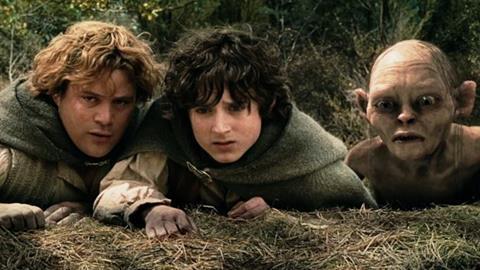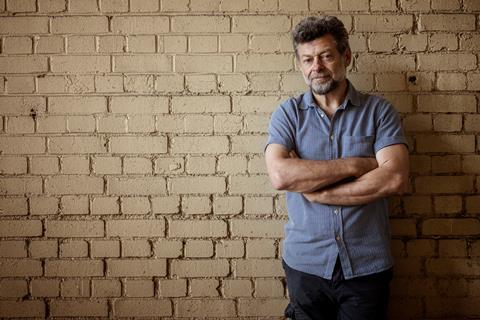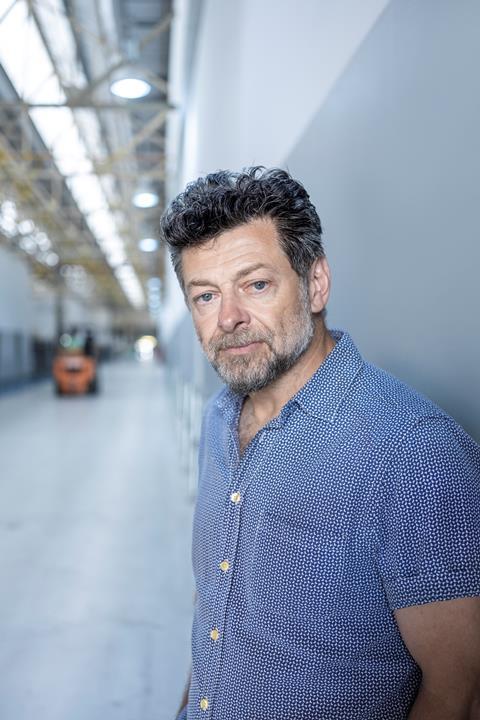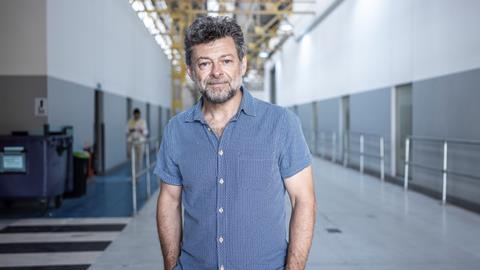From Gollum to King Kong, Andy Serkis is widely credited as the man who brought performance capture into the mainstream. Ahead of IBC2019, the actor/director sat down with James Pearce to discuss the growth of this technology and his long association with it.

When someone mentions the term motion capture in cinema, one actor leaps to mind. Andy Serkis, who demonstrated the true power of performance capture technology during his ground-breaking performance as Gollum in Peter Jackson’s Lord of the Rings trilogy, recognises the role this tech has played in his career. His credits as animated CG characters in feature films is impressive. As well as Gollum – in both LOTR and its prequels The Hobbit trilogy – Serkis has also appeared as chimpanzee Caesar in the rebooted Planet of the Apes films, an animated Captain Haddock in Steven Spielberg’s The Adventures of Tintin, and Supreme Leader Snoke in the new generation of Star Wars films.
“I always had a desire to be a storyteller visually,” says Serkis. “After years of doing theatre and then television, and then into film. At the end of The Lord of the Rings, I thought my life would kind of return to normal, and I’d go back and be a conventional actor.”
When Jackson asked him to play King Kong in the remake of the 1930s classic, it was a huge realisation for Serkis: mocap wasn’t going to go away.
“This piece of technology, this way of working, was a 21st century tool to enable an actor to play anything, and to become anything,” he says. “Having played a small, three-and-a-half-foot hobbit with a passion for rings, and then to be asked to play a 25-foot gorilla who discovers that he can have a relationship with another being on this planet suddenly made me realise that typecasting was over.”
Behind the lens
Englishman Serkis, who graduated from Lancaster University in 1985 with a Visual Arts degree, moved behind the camera under Peter Jackson’s tutelage, serving as the second unit director on The Hobbit films, before making his directorial debut with Breathe. He also directed Mowgli: Legend of the Jungle which featured Christian Bale, Cate Blanchett, Benedict Cumberbatch, Naomie Harris, as well as Serkis himself, carrying out motion and voice capture work.
He speaks to IBC365 just weeks after being announced as the director of Venom 2 which is set to be released in 2020. But it was video games that first offered Serkis his route into helming productions.

“I had experience in that space, and my desire to become a director sort of preceded work on work using performance capture technology,” he explains. “But after the big films like The Lord of the Rings and King Kong happened, I was asked to direct some performance for video games.”
His involvement in a number of games (as well as those linked to his films, for example Electronic Arts’ The Lord of the Rings: The Battle for Middle-Earth, he is also credited with dramatic direction for 2007’s Heavenly Sword and 2010’s Enslaved: Odyssey to the West) was an “entirely new territory” for Serkis, but it gave him valuable experience of an unconventional form of content-making.
“I love directing live action in the conventional sense and in fact Breathe, my very first movie, was a completely non-performance capture based project. Mowgli however clearly was a hybrid use of advanced performance capture technology,” he explains. “My desire to direct was always there. I wanted to be a storyteller using the camera and working with other actors and filming performance.”
Equally, adds Serkis, the emergence and evolution of performance capture technology “made it very appealing” to go into directing. This, in part, was why he and producer Jonathan Cavendish launched their own production company, The Imaginarium Studios, in 2011. The company, which is based at Ealing Studios in London, is dedicated to the invention of believable, emotionally engaging digital characters using performance capture technology and specialises in the use of motion capture.

“When we set up the company, it was with a view to me directing projects, which were both live action and small films,” says Serkis. “Stories I really wanted to tell, as well as the bigger blockbuster type movies, and content on other platforms like video games.”
It is for his work with motion capture – including the work of The Imaginarium – that Serkis is being honoured with IBC’s highest award at this year’s show – the International Honour for Excellence.
“I’m hugely excited,” says Serkis about the award. “I’m humbled and I really do share it with all of the artists that have been on the journey with me, because what I’ve achieved is only because of thousands of other people’s contributions. It’s important to remember that.”
The future performance
Serkis says that the perception of what is involved in a motion capture performance has changed over the 20 years since he first played Gollum.
“At the beginning people were asking ‘what is this?’ How could it possibly be acting? How can it possibly be performance? So, there was a gross misunderstanding that performance capture in a sense is not a type of acting, or that you suddenly approached the process of acting in a different way.
“I’ve always said it’s identical to conventional acting,” he continues. “You are becoming a character and you’re embodying a role, discovering a back history for the character, a psychology and emotional centre for the character. The physicality for the character is exactly the same process as when you’re working on set with the director.”
He explains that while conventional actors may show up on set wearing costumes, the mocap performer’s costumer is a suit with dots, “but the process is exactly the same and you are filmed in exactly the same way.”
“I do think over the last two decades there is more recognition as more and more actors have played performance capture roles, and they will continue to do so - it’s certainly not going to go away.”
“At the beginning people were asking ‘what is this?’ How could it possibly be acting? How can it possibly be performance?”
The Imaginarium offers Serkis opportunity to work on mediums beyond cinema, including TV, computer games and even theatre.
“There are huge possibilities for performance capture,” he explains. “About three years ago, we worked closely with the Royal Shakespeare Company on a production of The Tempest and one of the actors who was playing Ariel – the shape shifting sprite who accompanies Prospero – was a performance-captured role.”
This is very exciting! @andyserkis is our special guest @ #IBC2019 and invites you to join him & his 'friend' at what promises to be an unforgettable event. Book your conference tickets TODAY to see Andy in action on 15th Sept: https://t.co/QCWZ84C6Fd #seeitdifferently #gollum pic.twitter.com/31aItbylnd
— IBC (@IBCShow) September 4, 2019
The performance was done in real time on stage, meaning Serkis and his team were able to set up the equipment, with the actor wearing a mocap suit, and then project images in real time onto various different surfaces.
“The avatar could then shape shift, so the actor could become all these other creatures and beings on stage. And I think that that was the first time it ever really been done in that way,” says Serkis. “[this] opens up a whole new way of working, which I’m very excited about.”
He says it brings lots of disciplines together such as cinema, theatre, video games, VR and augmented reality.
“All of those platforms are perfect for performance capture usage; anything from going to an art gallery or a museum and having an avatar character that can walk you around rather than an audio tour. Or you [might] go to Hadrian’s Wall and see a battle being re-enacted using augmented reality – the possibilities are endless.”
Partner power
The Imaginarium collaborates closely with virtual display company Magic Leap: “We’re really starting to try and isolate and create content that is absolutely bespoke and meant for augmented reality,” he says of this relationship.

As an example, after Serkis had seen a London theatre performance of The Grinning Man – based on a novel by Victor Hugo, he spoke with the producers about capturing the performance using mocap technology in order to “bottle the magic” of the theatre into an AR/VR production.
“We were able to come back after the show closed – everyone was very generous with their time – and spent a week capturing the two and a half hour-show to create a five-minute piece,” he says. The Imaginarium scaled down all the actors to present the opening number of the show on a table.
“It launched on Magic Leap’s device as a piece of ‘tabletop’ theatre. It’s really quite astonishing,” he adds.
This use of real-time motion capture also extends to the filmmaker’s toolkit. Rather than having an actor perform and the director later seeing a CG rendering of that performance, advances in performance capture technology means directors and producers can now see a rough outline of the performance in real time.
“Certainly, one of the biggest growth [areas] within the film industry is virtual production and a kind of a streamlined pipeline, which takes you all the way through from pre-visualisation into actually shooting, and then into post. Some shots [are created] using video game technology such as Unity, or using Unreal [from Epic Games], who we have a very close association with.
“We really value their partnership,” he continues. “They help us enormously with being able to see characters and avatars brought to brought to life in environments where you can control lighting and then you can choose camera angles and so on – it’s just brilliant way of working.”
A new stage
Serkis has been justly recognised for his work with motion capture, including two Saturn Awards and an Empire Award. He also picked up a Golden Globe nomination for his portrayal of serial killer Ian Brady in the British television film Longford (2006) and was nominated for a BAFTA for his portrayal of new wave and punk rock musician Ian Dury in the biopic Sex & Drugs & Rock & Roll (2010).

He will make his first ever visit to IBC when he collects the International Honour for Excellence award. He will also sit down for an on-stage interview with Carolyn Giardina, journalist for The Hollywood Reporter and The IBC Daily, to share his experiences and his observations about the continuing evolution for actors, producers and audiences in cinema.
“I’ve never been to IBC before,” he says. “I’m excited to see the show. I know that there are extraordinary amounts of very, very talented and forward-thinking creative people and companies. I’m really excited about seeing what’s on offer, not just for me in my industry, but also to see what else is out there.
“I’m also looking forward to catching up with lots of the people who we’ve been talking to and making connections with.”
Andy Serkis is a keynote speaker at IBC2019, catch him in conversation at the Cinematic trailblazer session on Sunday.
-
IBC2019 is from 13-17 September at the RAI, Amsterdam.

























No comments yet